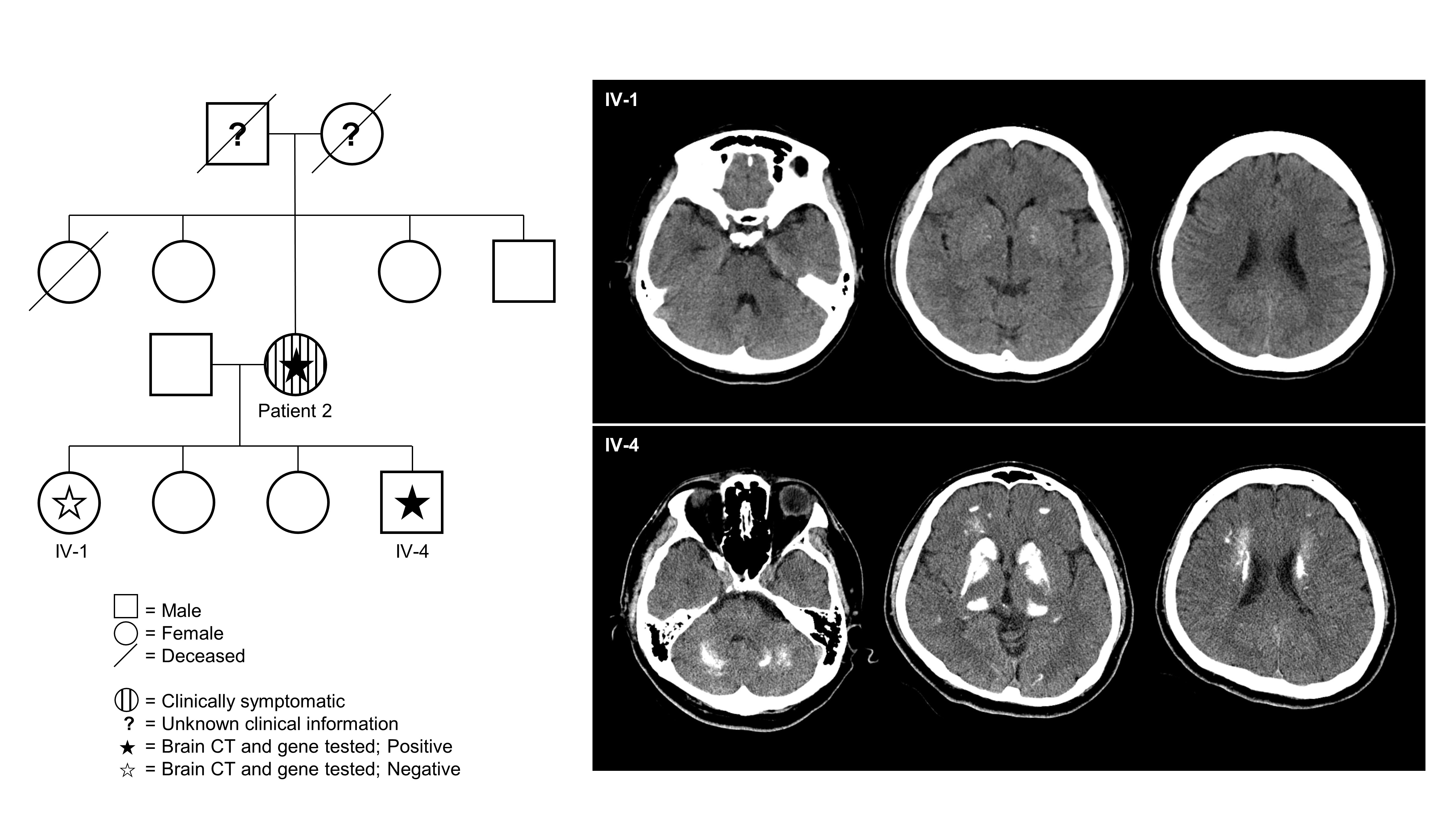Objective: We report two cases of genetically confirmed PFBC with a SLC20A2 mutation that presented with very-late onset orofacial dyskinesia.
Background: Primary familial brain calcification (PFBC), classically referred to as Fahr’s disease, is a rare genetic disorder characterized by calcified deposits in bilateral basal ganglia and other brain regions. Patients exhibit a broad spectrum of neuropsychiatric features including chorea, ataxia, parkinsonism, and cognitive impairment with diverse severity and ages at onset. Mutations in SLC20A2, PDGFB, PDGFRB, and XPR1 genes have been identified to cause PFBC mostly in a dominant fashion.
Method: Two unrelated patients, a 68-year-old man (patient 1) and a 69-year-old woman (patient 2), presented with a 1-year history of orofacial dyskinesia. There was no notable medication history, and brain computed tomography showed dense calcifications in the bilateral basal ganglia, centrum semiovale and dentate nuclei in both patients. Patient 1 had a maternal family history of similar perioral movements, and a son of patient 2 had asymptomatic calcifications on brain imaging. Despite the very old ages at onset, the patients’ orofacial dyskinesia without preceding exposure to neuroleptics, along with calcified deposits on brain imaging and the family history of patient 1 prompted the necessity to screen genetically inherited disorders, particularly PFBC.
Results: Heterozygous variants of the SLC20A2 gene were identified in both cases: c.1703C>T, a missense mutation in the exon 9 of patient 1, and c.971c>A, a nonsense mutation in the exon 8 of patient 2 and her asymptomatic son with brain calcifiation. The asymptomatic daugher, who had no abnormal degree of brain calcification in brain CT, had no mutation in the SLC20A2 gene. No variant was found in the PDGFB, PDGFRB, XPR1 and HTT genes.
Conclusion: Orofacial dyskinesia is a classic neurologic symptom with an extensive list of differential diagnoses. When elderly patients newly develop orofacial dyskinesia, the possibility of tardive dyskinesia comes first as a major consideration. Nevertheless, the importance of considering genetic pathomechanisms in elderly patients is growing. Our cases that developed orofacial dyskinesia as the presenting symptoms of PFBC at a very old age illustrates the importance of considering this genetic movement disorder in orofacial dyskinesia patients of all ages.
To cite this abstract in AMA style:
K.A Woo, D. Yoo, B. Jeon, J.Y Lee. SLC20A2 mutation manifesting as very-late onset orofacial dyskinesia [abstract]. Mov Disord. 2020; 35 (suppl 1). https://www.mdsabstracts.org/abstract/slc20a2-mutation-manifesting-as-very-late-onset-orofacial-dyskinesia/. Accessed April 2, 2025.« Back to MDS Virtual Congress 2020
MDS Abstracts - https://www.mdsabstracts.org/abstract/slc20a2-mutation-manifesting-as-very-late-onset-orofacial-dyskinesia/

